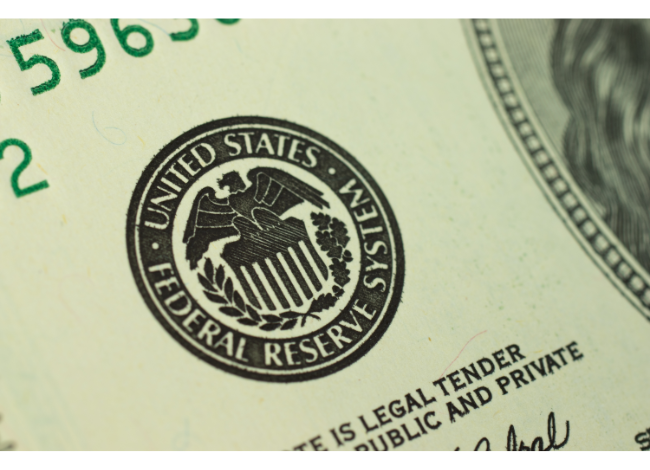During Refinitiv Lipper’s fund-flows week ended June 1, 2022, investors were overall net purchasers of fund assets (including both conventional funds and ETFs) for the fourth week in five, redeeming $3.6bn.
Money market funds (-$12.4bn) reported weekly outflows, while equity funds (+$7.4bn), tax-exempt bond funds (+$1.2bn), and taxable bond funds (+$262m) attracted inflows.
Index performance
At the close of Refinitiv Lipper’s fund-flows week, US broad-based equity indices traded positive for the second week straight—Nasdaq (+4.89%), Russell 2000 (+3.09%), S&P 500 (+3.08%), and DJIA (+2.16%).
Fixed income indices traded mixed following their first weekly gain in 11 weeks. The Bloomberg Municipal Bond Total Return Index (+1.53%) finished in the black for the second straight week as the Bloomberg U.S. Aggregate Bond Total Return Index (-0.72%) fell over the week.
Overseas broad market indices traded mostly positive as well—Dax 30 (+2.25%), Shanghai Composite (+2.07%), Nikkei 225 (+0.88%), and FTSE 100 (-0.26%).
Rates/yields
The 10-two Treasury yield spread rose over the week (+8.98%). Treasury yields along the yield curve increased—the two- (+6.47%), five- (+8.21%), 10- (+6.70%), and 30-year (+3.78%).
The Mortgage Bankers Association reported the 30-year fixed-rate average declined for the fourth time in five weeks to 5.33%—still hovering around the highest level since 2009. The United States Dollar Index (DXY, +0.43%) appreciated as the VIX (-10.35%) decreased over the course of the week.
Market recap
Our fund-flows week kicked off Thursday, May 26, with the release of the Federal Reserve’s May meeting minutes. The notes spelled out a road map for the next two meetings as combating inflation remained their primary task.
It is widely expected the Fed will hike interest rates by another 50 basis points in June and July, after which Fed actions will likely revert to being data-driven.
The National Association of Realtor’s (NAR) Pending Home Sales Index (PHSI) fell to 3.9% in April, marking the sixth straight month of declines and its longest such streak since 2018.
US equity markets posted a positive day with the Nasdaq (+2.68%) and Russell 2000 (+2.17%) leading the way. Macy’s, Dollar Tree, Dollar General, and Williams-Sonoma all reported better-than-expected quarterly results which alleviated retail concerns.
US equity indices ended the week on May 27 very strong—Nasdaq (+3.33%), Russell 2000 (+2.70%), S&P 500 (+2.47%), and DJIA (+1.76%).
This was the best calendar week for the DJIA and S&P 500 since November 2020. Major news from the Department of Commerce showed that the Personal Consumption Expenditures Index (PCE, the Fed’s preferred gauge of inflation) increased just 0.2% in April, down from a 0.9% gain in March.
Falling consumer confidence
The year-over-year increase was 6.3%, still more than three times the Fed’s ideal level.
The report also detailed a 0.9% increase from last month in US consumer spending and a 0.6% increase in wages, showing the US economy may be more stable than originally anticipated. Treasury yields were largely unchanged—the two- (+0.40%) and 10-year (-0.33%).
On Tuesday, May 31, US equity markets ended their nice three-day run—Russell 2000 (-1.26%), DJIA (-0.67%), S&P 500 (-0.63%), and Nasdaq (-0.41%).
The Conference Board’s index on consumer confidence fell to 106.4, marking a three-month low. Overseas, the eurozone reported that annual inflation spiked to an all-time high. US Treasury yields jumped on the day, the two- and 10-year yields increased by 1.68% and 3.46%, respectively.
Our fund-flows week wrapped up Wednesday, June 1, on the first day of the Federal Reserve’s quantitative tightening, which is the Fed’s plan to let bonds mature off its balance sheet without any more additional asset purchasing.
The central bank purchased bonds from March 2020 to March 2022 with the intention to curb economic woes following the Covid-19 pandemic.
The expectation now is that the yield curve will steepen with rates rising as liquidity is pulled from the market and volatility remains high.
The Department of Labor published its Job Openings and Labor Turnover Survey (JOLTS) which reported that 11.4 million positions were available at the end of April (down from March’s 11.9 million), signalling the first monthly decline since January.
Those who quit their jobs also fell (from 4.5 million to 4.4 million), however still registered as the third-largest monthly total on record.
US equity markets fell for the second consecutive day—S&P 500 (-0.75%), Nasdaq (-0.72%), DJIA (-0.54%), and Russell (-0.49%).
The two- and 10-year Treasury yields also jumped for the second straight session, 4.88% and 3.06%, respectively.

